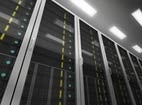Conventional wisdom holds that the modern data center is a giant energy vacuum, sucking in larger and larger shares of available power and kicking dangerous emissions into the atmosphere in return.
In this case, conventional wisdom is not wrong. But those who have taken a hard look at the current data/energy paradigm are starting to ask a very basic question: Does it necessarily have to be this way?
Indeed, much of the focus of late has been to drive greater efficiency in the data center—easing the energy draw through low-power components, virtualization and advanced load management, while also increasing data output. This has naturally led to the development of hyper-scale data environments built on modular infrastructure, with the thinking being that regionalized data capacity can be allocated more efficiently than traditional, enterprise-based facilities.
Efficiency is a noble goal, but is it possible that data facilities, particularly the largest ones, can become energy producers as well?
It’s not as far-fetched as you might think. As I mentioned in a previous blog post, top energy companies like GE are toying with the idea of placing power turbines and other generating equipment at the sites of some of their largest consumers, including large manufacturing facilities and data centers. In this way, the bulk of the electricity could go directly to the largest consumers, bypassing the wasteful distribution process. At the same time, many data organizations are planning or building facilities near established power courses, such as landfills and wind farms, to better tap into available supplies.
A key example is Microsoft, which is building a $250 million facility in San Antonio that will rely heavily on sustainable power sources and fuel cells in order to drive the data/energy efficiency ratio. Ultimately, the company is aiming for “data plants” that will operate off the grid entirely or possibly even contribute energy back into the grid in times of shallow data demand. The company is also working with the University of Texas’ Sustainable Energy Research Institute on ways to improve the reliability of sustainable energy sources so as not to place critical data infrastructure and services at risk.
But unused energy is not the only way the data center can contribute to the power needs of others. Waste heat is now widely seen as a valuable resource that ought to be leveraged, either by diverting it to nearby office space where a little excess heat is welcome, or even to on-site power generators that can in turn kick the energy back to data infrastructure or related electrical needs. The city of Seattle, for example, has a pilot project underway that would transfer heat from local data centers to warm upwards of 10 million square feet of office space. The heat would be in the form of water used to cool not just data systems, but local sewer lines and electrical substations as well.
Indeed, as data facilities become larger and the amount of data generated climbs into the stratosphere, it only makes sense to view the excess heat as a resource to be exploited rather than just another cost of doing business, says tech blogger David Wolf. The problem is that ambient heat is a very diffused form of energy, so its conversion into a useful product is rather high on the difficulty scale. One possible solution is the production of steam, which can then be used to power turbines. And as infrastructure becomes more dense and modular, the challenge of capturing sufficient amounts of heat becomes diminished.
The energy demands of modern data environments are so high these days, even in the presence of virtualization and advanced resource allocation, that it is unlikely the typical enterprise will be able to turn its local data center into an energy producer. But for the colocation and cloud communities, the possibilities are intriguing, to say the least.
And it would be nice after all these years of playing the bad guy in the energy debate, if the enterprise industry could start getting a little loving for a change.



